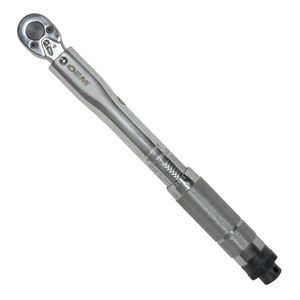
In every combustion engine, the cylinder head must be mated to the engine block for it not only to operate but to keep substances contained. The component that’s used to seal the two parts together is called a cylinder head gasket, or more commonly, just a head gasket. And when this seal fails, it can cause a variety of symptoms that require a swift and long-lasting repair.
Head gasket replacement is a significant job, and it can cost into the thousands of dollars to complete at a garage. If you’re doing the job yourself, you can save bundles of cash, but it’s crucial to get the job done right. Here’s what you need to know about the head gasket’s purpose, symptoms you can encounter, and general steps to replace it.
Suggested AutoZone Products


A head gasket provides a seal between the engine block and the cylinder head. It ensures that the combustion process remains contained within the cylinders while allowing coolant and oil to flow through the engine without mixing.
The most common type of head gasket is a multi-layered steel gasket that has between two and five thin layers sandwiched between the upper and lower surface. Other types can be fiber-based or even copper coated. Along with a durable ring around the cylinder, it seals the engine oil and coolant passages with materials like silicone. And while you might not expect this gasket to ever fail, it can and does.
When a head gasket fails, there are going to be definite symptoms, especially as time progresses. They an include:
One or more of these symptoms should trigger you to immediately inspect the head gasket and figure out the appropriate parts and processes to get it fixed.
To change the head gasket is a complicated process that requires diligent cleaning and precise assembly. To get the job done right, you’ll need tools and materials like:
When you take on the job of head gasket replacement, there are inherent dangers and challenges to be aware of. Always work in a well-ventilated area, and wear safety gloves and glasses. Disconnect the battery before starting any work, and use jack stands to support the vehicle securely if lifting is required.
The first step is disassembly. When removing parts and fasteners, mark where each goes to help with reassembling your vehicle afterwards.
A new head gasket can be susceptible to failure if the surfaces aren’t clean and straight, so don’t skip over or rush through the preparatory phase.
Remember to follow each step carefully, prioritize safety, and consult your vehicle’s service manual for specific instructions. When you’re after the right parts and tools to get the job done right, AutoZone has what you need. Shop confidently online and in-store with trusted names like Duralast available.
Head gaskets can fail due to engine overheating, poor installation, or using the wrong type of gasket material.
How long does it take to replace a head gasket?Replacing a head gasket can take anywhere from 6 to 12 hours, depending on the vehicle and the level of expertise.
Can I replace a head gasket myself or should I hire a professional?If you have experience with automotive repairs and the necessary tools, you can replace a head gasket yourself. However, if you’re unsure, it’s best to hire a professional to avoid potential mistakes that could result in further engine damage.
What are the symptoms of a blown head gasket?Common symptoms include engine overheating, white smoke from the exhaust, loss of coolant, milky oil, and bubbles in the radiator.
What should I do if I notice coolant leaking from my engine?If you notice coolant leaking from your engine, address the issue immediately. Inspect the head gasket for signs of damage and consider replacing it if necessary.
Advice, how-to guides, and car care information featured on AutoZone.com and AutoZone Advice & How-To’s are presented as helpful resources for general maintenance and automotive repairs from a general perspective only and should be used at your own risk. Information is accurate and true to the best of AutoZone’s knowledge, however, there may be omissions, errors or mistakes.
Be sure to consult your owner’s manual, a repair guide, an AutoZoner at a store near you, or a licensed, professional mechanic for vehicle-specific repair information. Refer to the service manual for specific diagnostic, repair and tool information for your particular vehicle. Always chock your wheels prior to lifting a vehicle. Always disconnect the negative battery cable before servicing an electrical application on the vehicle to protect its electrical circuits in the event that a wire is accidentally pierced or grounded. Use caution when working with automotive batteries. Sulfuric acid is caustic and can burn clothing and skin or cause blindness. Always wear gloves and safety glasses and other personal protection equipment, and work in a well-ventilated area. Should electrolyte get on your body or clothing, neutralize it immediately with a solution of baking soda and water. Do not wear ties or loose clothing when working on your vehicle.
FREE Loan-A-Tool® program requires returnable deposit. Please note that the tool that you receive after placing an online order may be in a used but operable condition due to the nature of the Loan-A-Tool® program.